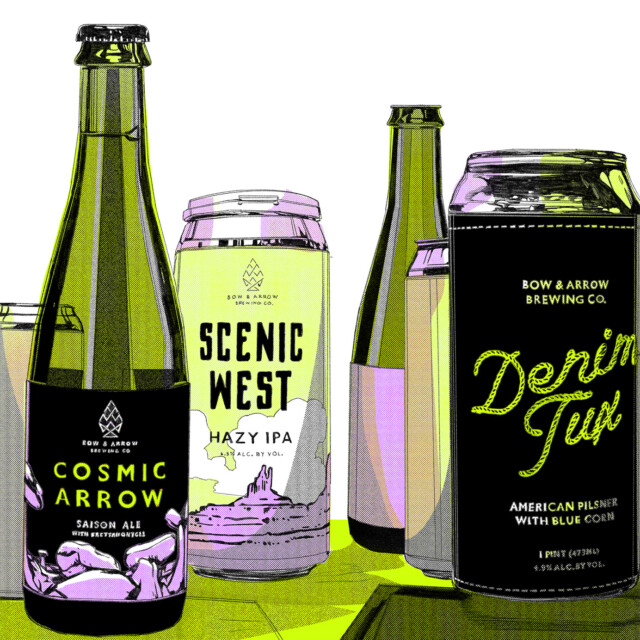This feature is part of our 2024 Next Wave Awards.
Most beer historians will tell you that the American brewing industry began to take shape when Germans and Austrians came to the New World, bringing their techniques and ingredients with them. But roughly 1,000 years ago, many Native American tribes were producing a low-ABV beer called Tiswin (also known as Tesgüino and Tejuino) made from fermented corn kernels or Saguaro cactus, depending on the region. It’s a piece of beer history that’s often overlooked, but Bow & Arrow Brewing Company is bringing it back into the modern zeitgeist with craft beer.
Bow & Arrow president and CEO Shyla Sheppard is a member of the Three Affiliated Tribes (the Mandan, Hidatsa, and Arikara), and creative director Missy Begay was raised on the Navajo (Diné) Nation. As founders of the first Native American women-owned craft brewery in the country, the married couple has curated a business that still keeps pace with trends in modern beer while paying homage to ancestral lands by incorporating indigenous ingredients into their brews — making them not only unique in flavor, but culturally significant, too.
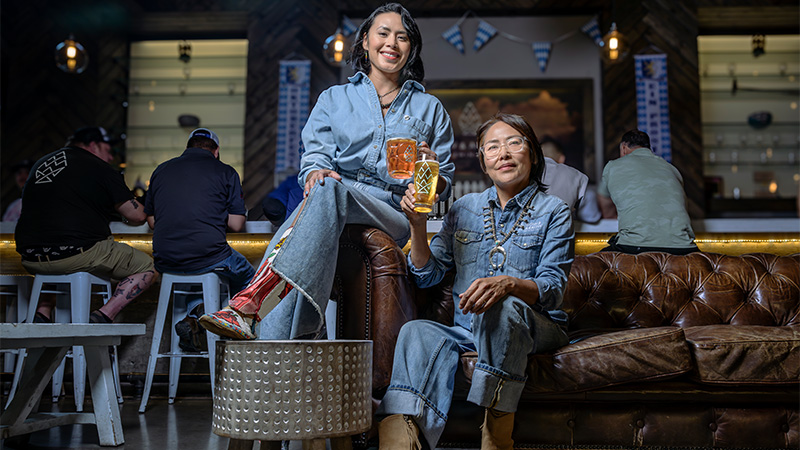
Before Bow & Arrow’s birth in Albuquerque in 2016, Sheppard had spent the previous decade as an entrepreneurial advisor, specifically in social impact investing in New Mexico. And outside of Bow & Arrow, Begay is a practicing physician. In her practice, she incorporates traditional Diné medicines into Western applications; landrace hop varietals make their way into antiseptic salves and tinctures to aid sleep, and foraged Navajo tea is used to soothe stomach aches. At Bow & Arrow, these ingredients find a new life as beer components, allowing the founders and head brewer Samuel Arredondo to showcase indigenous agricultural products to a broad audience.
“When I was working in social impact investing, I was getting into the slow food movement as well as buying from and supporting local farmers and ranchers,” Sheppard says. “Beer became a way to expand on my culinary interests, so we like to incorporate local indigenous ingredients when we can.” The list of those ingredients includes everything from sumac and juniper to prickly pear. Heirloom blue corn, an ingredient the couple is particularly fond of, is the star component of the brewery’s flagship pilsner, Denim Tux.
“The main connection and memory that I have of corn growing up relates to my grandma and her making some of our traditional foods,” Sheppard says. “One in particular was a corn ball made with ground corn, rendered tallow, and berries. In what we do, it’s less about it being a fermentable sugar source, and more about imparting flavor and aroma.”
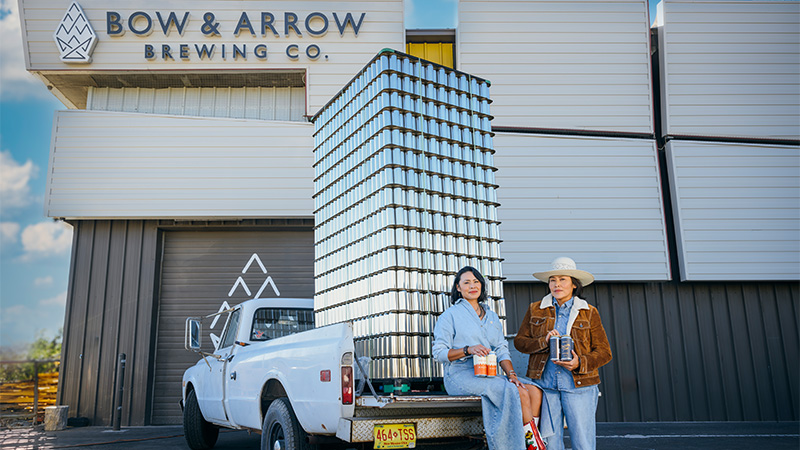
The corn the brewery uses grows just a stone’s throw away from Bow & Arrow at the Santa Ana Pueblo, where a tribal enterprise roasts and mills the crop. The three-leaf sumac used in variants of the brewery’s foeder-aged farmhouse ale Curio hails from Navajo Agricultural Products Industry. More recently, the founders have been foraging Neomexicanus hops, a landrace species that’s been growing wild in the American Southwest for thousands of years, and have utilized yeast strains procured from a local lavender farm as well as from a peach tree growing on the brewery’s patio.
“A lot of our interest in exploring local indigenous varieties of ingredients stems from climate change and the importance of looking for ingredients that are resilient to the changing landscape,” Sheppard says. “A lot of these varieties are hardy and don’t need a lot of extra water, so we think about our resources. It really starts there.”
Bow & Arrow is also making huge strides to support Native American charities all over the continent. Sheppard noticed that in the years leading up to the pandemic, there was a sudden rise in indigenous land acknowledgements. “I think a lot of us were thinking about why we’re doing what we’re doing, and it really caused the world to take pause,” she says. “There was this trend of native land acknowledgements happening a lot through Zoom calls and social media, and it felt kind of performative and a little empty. That led to the idea of acknowledging whose ancestral land we’re living and brewing on, and asking other breweries to do the same.”
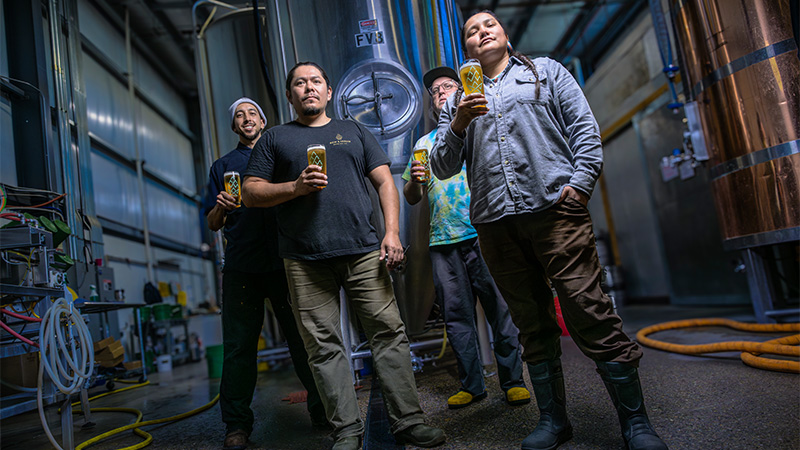
On Indigenous People’s Day in 2021, the couple launched the Native Land Campaign, a collaborative initiative across North America to pay homage to the native lands on which craft beers are brewed. All participating breweries are given a base beer recipe and a can-art template, which provides a section for each brewery to acknowledge the ancestral land on which it’s located. The proceeds go to native nonprofits that promote ecological stewardship, access to ancestral lands, and revitalizing traditional agriculture and food ways. Since its first year, the Native Land collaboration has raised over $100,000 in donated funds.
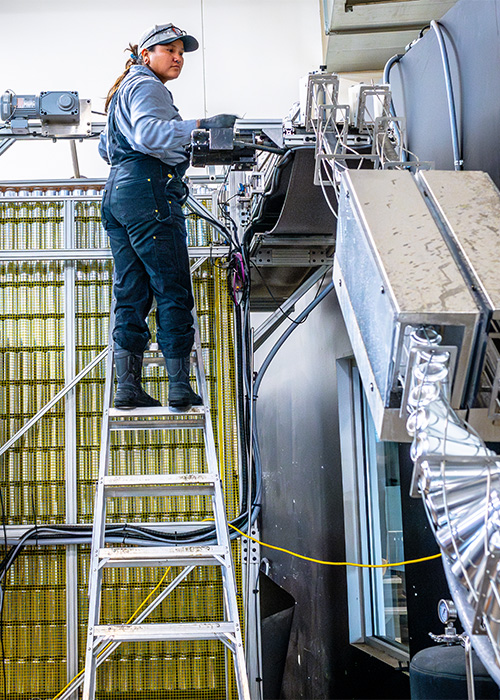
With the brewery eight years on, Sheppard and Begay’s pursuit of redefining the narrative of American craft brewing and reclaiming ancestral foodways is far from over.
“A lot of the history relating to Indigenous or Native people in North America is still being discovered,” Sheppard says. And with those discoveries will surely come more from Bow & Arrow.
